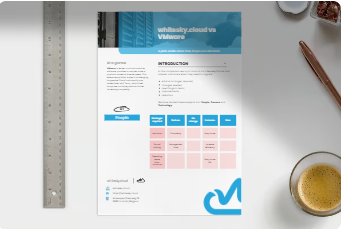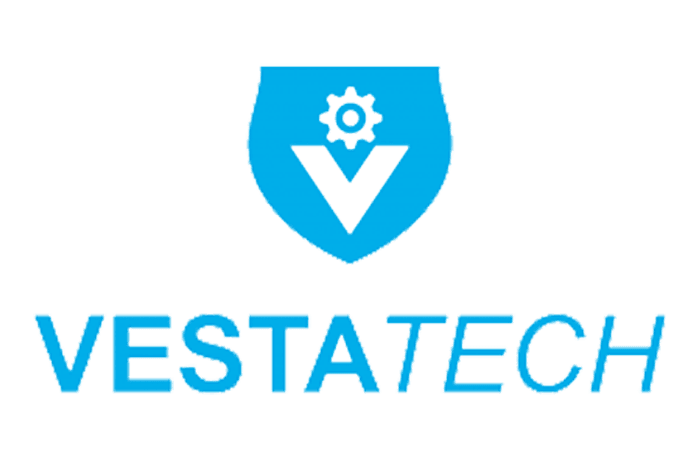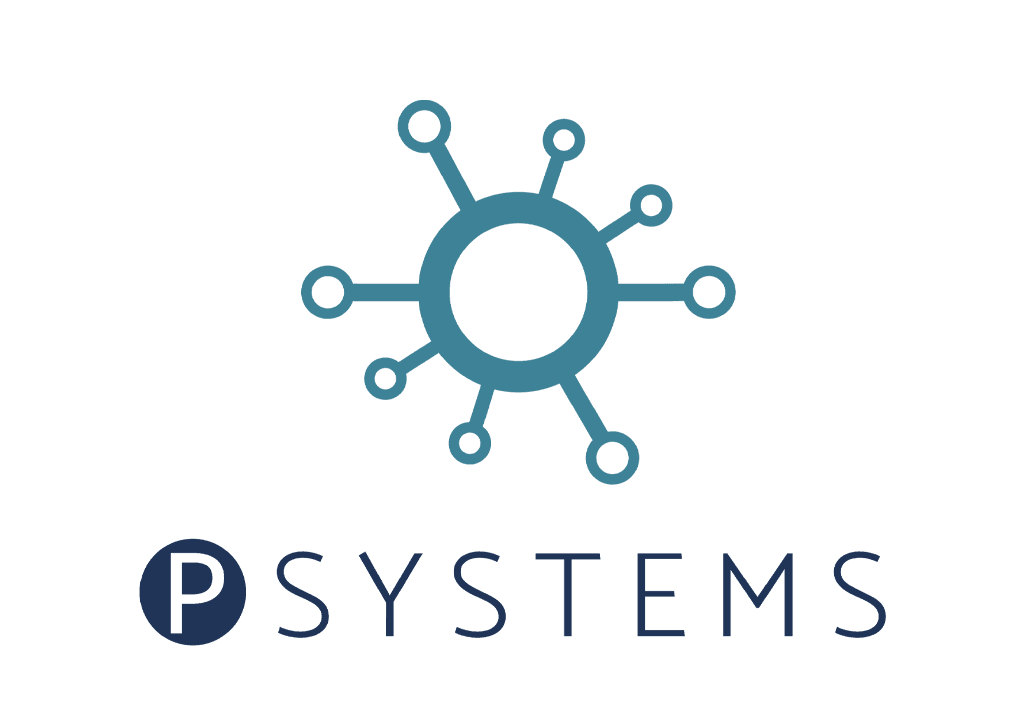
Introduction
In today’s rapidly evolving digital landscape, businesses across industries are constantly seeking ways to optimize their operations and harness the power of technology to gain a competitive edge. One significant trend that has gained traction in recent years is the adoption of edge cloud computing.
The cloud has revolutionized the way businesses store, process, and access their data and applications. Traditionally, data and applications were housed in centralized data centers, requiring businesses to rely on a network connection to access and use them. However, with the rise of IoT devices, artificial intelligence, and the increasing need for real-time data processing, companies are now turning towards Edge cloud solutions.
Edge cloud computing involves placing computing resources, such as storage, processing power, and data analytics capabilities, closer to the edge of a network. This can be in the form of physical devices or virtual infrastructure strategically positioned at the network’s edge, closer to where the data is generated and consumed. By decentralizing compute power, edge cloud aims to overcome the limitations of traditional cloud computing models.
The benefits of moving to an edge cloud are manifold. Firstly, it enables businesses to reduce latency by significantly reducing the distance between the data source and the device requesting the data. This is particularly crucial in scenarios where real-time data analysis and decision-making are essential, such as autonomous vehicles, smart cities, or remote healthcare monitoring.
Secondly, edge cloud computing improves reliability and resilience, as it allows for distributed redundancy. By dispersing computing resources across multiple locations, businesses can minimize the impact of localized failures or network congestion. This ensures continuous availability and uninterrupted services to end-users.
Moreover, edge cloud offers enhanced data privacy and security. By keeping data close to its source, it becomes less prone to interception, manipulation, or data breaches during transmission over a network. Industries dealing with sensitive data, such as healthcare or banking, can benefit from the added layer of security provided by edge computing.
Additionally, the scalability and efficiency of edge cloud computing are significant advantages for businesses. It allows for dynamic resource allocation based on workload requirements, minimizing wastage and optimizing cost-efficiency. This scalability ensures that businesses can handle spikes in demand without the need for massive infrastructure investments.
Lastly, edge cloud computing enables businesses to leverage emerging technologies like augmented reality (AR), virtual reality (VR), and machine learning (ML) at the edge. By processing data and running AI algorithms closer to the edge, companies can offer immersive experiences, improved decision-making, and enhanced customer interactions.
In conclusion, the shift towards edge cloud computing marks a paradigm shift in how businesses leverage technology. As the volume of data generated and the demand for real-time insights continue to increase, companies across industries are recognizing the benefits of an edge cloud approach. From reduced latency to improved reliability, security, scalability, and the ability to harness emerging technologies, the edge cloud offers a multitude of advantages for businesses seeking to stay ahead in today’s fast-paced digital world.
A definition of Edge cloud

Edge cloud refers to the decentralization of computing resources by bringing data storage and processing closer to the source of data generation, such as the device or user. Unlike traditional cloud computing that relies on centralized data centers, edge cloud brings the computing power closer to the network edge, reducing latency and improving overall performance.
In simple terms, edge cloud refers to the distribution of computing services and resources on the outer edges of the network infrastructure, bringing processing capabilities closer to where data is created and consumed. This distribution not only allows for quicker access to data but also enables real-time decision-making and faster response times.
The need for edge cloud has emerged as companies increasingly employ technologies and devices that generate massive amounts of data in real-time. From IoT devices to autonomous vehicles, these technologies require low-latency, high-bandwidth networks and real-time data processing capabilities. By deploying edge cloud infrastructure, companies can alleviate network congestion, reduce latency, and improve the overall user experience.
Another driving factor behind the move to edge cloud is the explosion of data-intensive applications. Many modern systems rely on real-time analytics, machine learning, and artificial intelligence to make critical decisions. With edge cloud, companies can process data locally, allowing for faster insights, reduced dependence on centralized data centers, and improved data privacy.
Moreover, edge cloud offers increased reliability and resilience. By spreading computing resources across multiple edge locations, companies can ensure that even if one location goes down, the system as a whole remains operational. This distributed architecture provides an added layer of redundancy and fault tolerance, vital for mission-critical applications.
In summary, the adoption of edge cloud is driven by the need for real-time data processing, reduced latency, improved user experience, and increased reliability. By bringing computing power closer to the source of data generation, edge cloud enables companies to leverage the benefits of low-latency computing, faster decision-making, and improved system performance. As technology continues to evolve, more companies are expected to embrace the edge cloud to keep up with the demands of an increasingly connected and data-driven world.
Brief overview of the growing trend in companies adopting edge cloud technology

In recent years, there has been a noticeable shift in the way companies handle their data and IT infrastructure. This shift is towards adopting edge cloud technology, a growing trend that has garnered attention from businesses of all sizes and industries.
Edge cloud refers to the decentralization of data processing and storage, with computing resources being located closer to the source of data generation rather than relying solely on centralized cloud servers. This allows for quicker response times, improved performance, and reduced latency.
One of the main reasons why companies are increasingly embracing edge cloud is the exponential growth of Internet of Things (IoT) devices. With the proliferation of smart devices such as sensors, wearables, and connected machinery, generating massive amounts of data, businesses are faced with the challenge of managing and processing this data efficiently. Edge cloud provides a solution by enabling real-time data analytics and faster decision-making at the edge of the network, reducing the need to transmit data back and forth to centralized data centers.
Another factor driving the adoption of edge cloud is the rise in data privacy and compliance concerns. With the implementation of stringent data protection regulations, such as the General Data Protection Regulation (GDPR), companies are under increasing pressure to keep data secure and ensure compliance. By utilizing edge cloud, businesses can store and process sensitive data locally, reducing the risk of data breaches and ensuring compliance with local data regulations.
Furthermore, edge cloud technology offers significant cost savings for companies. Since edge cloud reduces the amount of data that needs to be transmitted over long distances, it minimizes bandwidth usage and associated costs. This distributed architecture also allows for optimized resource allocation, enabling companies to scale their infrastructure according to their specific needs without incurring additional expenses.
Overall, the growing trend of companies adopting edge cloud technology can be attributed to its ability to address the challenges posed by the massive influx of data, provide enhanced data privacy and compliance, and offer cost-efficient solutions. As businesses continue to evolve and adapt to the demands of the digital age, incorporating edge cloud into their IT strategy becomes an essential step towards staying competitive and achieving operational excellence in today’s fast-paced business landscape.
Increased data processing speed (faster response time)

In today’s fast-paced business landscape, speed is of the essence. As companies strive to stay ahead of the competition, they are constantly seeking ways to improve their operational efficiency and enhance customer experiences. One of the major reasons why companies are increasingly moving to an edge cloud is the significant boost it offers in data processing speed, resulting in faster response times.
Traditionally, companies have relied on centralized cloud infrastructures for their data processing needs. While these centralized systems have served businesses well in the past, they can introduce latency issues when it comes to processing and delivering data to users. This delay in data transfer can be detrimental to certain industries, such as real-time analytics, e-commerce, or IoT (Internet of Things) deployments, where timely decisions and actions are crucial.
By adopting an edge cloud approach, companies can minimize the latency that occurs due to the long distances data has to travel between end-users and centralized data centers. Edge cloud infrastructure brings resources closer to the users, often through geographically distributed data centers or edge computing nodes. This proximity allows for faster data processing and response times, as the data is processed closer to where it is being generated or consumed.
The increased data processing speed offered by edge computing translates to quicker responses, reducing the time it takes for end-users to receive the desired information or services. For instance, in the realm of e-commerce, a fraction of a second delay in page load times can lead to significant drops in conversion rates and customer satisfaction. With an edge cloud solution, companies can deliver content and process transactions swiftly, enhancing the user experience and potentially improving sales.
Moreover, industries reliant on real-time data analysis, such as financial services or healthcare, can greatly benefit from the reduced latency provided by edge cloud infrastructures. By accelerating data processing and analysis at the network edge, businesses can make critical decisions with minimal delay. This capability can have a direct impact on the quality of care provided, trading strategies executed, or security threats detected promptly.
In summary, the drive towards edge cloud adoption by companies is motivated by the desire for increased data processing speed and faster response times. By leveraging distributed computing resources closer to the users, businesses can overcome latency challenges and provide seamless experiences for their customers. This competitive advantage enables companies to stay agile, responsive, and deliver optimal performance in a rapidly evolving business landscape.
Explanation of how edge cloud reduces latency by processing data closer to the source

Edge cloud computing has emerged as a transformative solution for businesses seeking to enhance their digital infrastructure and capabilities. One of the key driving forces behind this shift is the significant reduction in latency that edge cloud offers.
Traditionally, data processing and storage have been centralized, meaning that information would be sent from an end device to a distant data center for computation. This process can introduce noticeable delays, especially when dealing with real-time applications or large volumes of data. However, edge cloud computing utilizes a decentralized approach by bringing data processing closer to the source.
By strategically deploying edge cloud servers and infrastructure at the edge of the network, companies can minimize the distance data needs to travel. This proximity reduces latency as data only needs to traverse a shorter physical distance to reach the processing point. Consequently, businesses can achieve faster response times and improved application performance, which is crucial in today’s highly dynamic and competitive digital landscape.
Reduced latency is particularly important for applications that rely on real-time data processing, such as Internet of Things (IoT) devices, autonomous vehicles, and industrial automation systems. For instance, consider a self-driving car that needs to process sensor data instantly to respond to changing road conditions. With edge cloud, the car can communicate and process data locally, without waiting for information to traverse long distances to a distant data center. This swift data processing enables faster reaction times, better decision-making, and ultimately, improved safety.
Moreover, edge cloud computing offers enhanced user experiences for applications that involve multimedia content or data-intensive interactions. Streaming services, online gaming, and virtual reality applications are prime examples. By leveraging nearby edge cloud resources, these applications can ensure seamless and instantaneous playback or interactions, without the frustrating latency issues that can hinder user experience.
In addition to reducing latency, edge cloud computing also helps businesses overcome bandwidth constraints. Transmitting vast amounts of data to a central data center can strain network resources and saturate bandwidth. However, by distributing computation and storage capabilities to the edge, edge cloud offloads much of the network traffic, alleviating congestion and enhancing overall network performance.
As companies strive for greater efficiency, competitiveness, and customer satisfaction, incorporating edge cloud computing into their infrastructure becomes a strategic move. The reduced latency offered by edge cloud enables more efficient and faster data processing, benefiting real-time applications and improving user experiences. By embracing the potential of edge cloud, businesses can stay ahead in the digital age and lay a solid foundation for future success.
Examples of industries benefiting from reduced response times (autonomous vehicles, gaming, IoT)

In today’s fast-paced and technology-driven world, businesses across various industries are constantly looking for ways to enhance their operations and deliver seamless user experiences. One significant development that companies are increasingly adopting is the shift towards an edge cloud infrastructure. By implementing an edge cloud solution, businesses can significantly reduce response times, leading to numerous benefits across different sectors.
One industry that greatly benefits from reduced response times is autonomous vehicles. As self-driving cars become more commonplace, the need for real-time data processing and instant decision-making becomes crucial. By leveraging edge cloud computing, autonomous vehicles can process data locally, enabling faster response times and enhancing overall safety on the roads. With instantaneous data analysis, these vehicles can quickly adapt to changing road conditions, ultimately improving the efficiency and reliability of autonomous transportation systems.
Another industry that reaps the rewards of reduced response times is gaming. Online gaming platforms require low latency and minimal lag to deliver an immersive and uninterrupted user experience. With an edge cloud infrastructure, game servers can be deployed closer to the end-user, reducing the distance data needs to travel. This ensures faster packet delivery and drastically reduces latency, providing gamers with a more responsive and seamless gaming environment. By harnessing the power of edge computing, gaming companies can offer competitive advantages, attracting a larger player base and enhancing gamer satisfaction.
The Internet of Things (IoT) is yet another industry that benefits from reduced response times. With the increasing number of connected devices and sensors, IoT deployments generate vast amounts of data that require rapid processing and analysis. Edge cloud computing allows this data to be processed closer to the source, minimizing the need for data transfer to distant cloud servers. By reducing response times, edge cloud solutions enable real-time monitoring and decision-making in various IoT applications, such as smart home automation, industrial IoT, and healthcare monitoring systems. This not only improves operational efficiency but also enhances the overall performance and reliability of IoT solutions.
In conclusion, the adoption of edge cloud computing has proven to be advantageous for several industries, particularly those that heavily rely on reduced response times. Whether it be the autonomous vehicle, gaming, or IoT sector, the ability to process and analyze data locally enhances speed, security, and user experience. As businesses strive to stay ahead in this competitive landscape, embracing the edge cloud revolution emerges as a crucial step towards achieving success and maintaining a professional edge.
Improved reliability and network resilience

In today’s technology-driven world, businesses across various industries are constantly looking for ways to enhance their operations and deliver seamless user experiences. One significant development that companies are increasingly adopting is the shift towards an edge cloud infrastructure. By implementing an edge cloud solution, businesses can significantly reduce response times, leading to numerous benefits across different sectors.
One industry that greatly benefits from reduced response times is autonomous vehicles. As self-driving cars become more commonplace, the need for real-time data processing and instant decision-making becomes crucial. By leveraging edge cloud computing, autonomous vehicles can process data locally, enabling faster response times and enhancing overall safety on the roads. With instantaneous data analysis, these vehicles can quickly adapt to changing road conditions, ultimately improving the efficiency and reliability of autonomous transportation systems.
Another industry that reaps the rewards of reduced response times is gaming. Online gaming platforms require low latency and minimal lag to deliver an immersive and uninterrupted user experience. With an edge cloud infrastructure, game servers can be deployed closer to the end-user, reducing the distance data needs to travel. This ensures faster packet delivery and drastically reduces latency, providing gamers with a more responsive and seamless gaming environment. By harnessing the power of edge computing, gaming companies can offer competitive advantages, attracting a larger player base and enhancing gamer satisfaction.
The Internet of Things (IoT) is yet another industry that benefits from reduced response times. With the increasing number of connected devices and sensors, IoT deployments generate vast amounts of data that require rapid processing and analysis. Edge cloud computing allows this data to be processed closer to the source, minimizing the need for data transfer to distant cloud servers. By reducing response times, edge cloud solutions enable real-time monitoring and decision-making in various IoT applications, such as smart home automation, industrial IoT, and healthcare monitoring systems. This not only improves operational efficiency but also enhances the overall performance and reliability of IoT solutions.
In conclusion, the adoption of edge cloud computing has proven to be advantageous for several industries, particularly those that heavily rely on reduced response times. Whether it be the autonomous vehicle, gaming, or IoT sector, the ability to process and analyze data locally enhances speed, security, and user experience. As businesses strive to stay ahead in this competitive landscape, embracing the edge cloud revolution emerges as a crucial step towards achieving success and maintaining a professional edge.
Discussion on how edge cloud reduces dependency on a central data center

The advent of edge cloud technology has opened up new avenues for businesses to optimize their data management strategies. One of the significant benefits of adopting edge cloud is the reduction in dependency on a central data center.
Traditionally, companies heavily relied on centralized data centers to process, store, and manage their vast amounts of data. While these data centers provided a secure and controlled environment, they often posed challenges such as latency, network congestion, and potential single points of failure. Moreover, as businesses generate and consume more data than ever before, the strain on these central facilities has become increasingly burdensome.
By moving towards an edge cloud solution, businesses can distribute their data processing and storage closer to the edge of the network, bringing computing power closer to the end-users or devices. This decentralized approach not only reduces the latency experienced during data transmission but also provides greater flexibility and scalability.
Edge cloud allows companies to effectively manage data at the edge of the network, closer to where it is generated and consumed. This means that data processing and analysis can occur in real-time, enabling faster decision-making and faster response times for critical business operations. Whether it is collecting data from IoT devices, analyzing user interactions, or running complex algorithms for personalized experiences, edge cloud empowers businesses with lower latency and enhanced performance.
Furthermore, the distributed nature of edge cloud technology eliminates the risk of a single point of failure. If one node or edge server fails, the impact is limited to a specific location, preventing a complete system breakdown. This resilience and fault tolerance reduce the risks associated with downtime, ensuring uninterrupted service availability for companies.
Not only does edge cloud provide technical advantages, but it also offers cost savings for businesses. By reducing reliance on centralized data centers, companies can minimize infrastructure costs associated with maintaining and expanding these facilities. Instead, they can focus on leveraging the existing network infrastructure and deploying edge servers in strategic locations as required.
In conclusion, the adoption of edge cloud technology has garnered significant attention from businesses seeking to optimize their data management strategies. By reducing dependency on central data centers, businesses can experience lower latency, enhanced performance, improved fault tolerance, and potential cost savings. As the digital landscape continues to evolve, embracing edge cloud solutions will likely become a prevalent trend, enabling businesses to meet the growing demands of their customers and stay ahead in this competitive era.
Explanation of how a distributed edge network enhances network resilience and business continuity
A distributed edge network is becoming increasingly popular among businesses due to its ability to enhance network resilience and ensure uninterrupted business continuity. Unlike traditional centralized cloud architectures, an edge cloud utilizes a decentralized infrastructure that brings computing and storage closer to the end-users and devices at the edge of the network.
By distributing resources across multiple edge locations, businesses can reduce the dependency on a single data center. This distributed approach provides several benefits when it comes to network resilience. Firstly, it minimizes the risk of a single point of failure. In traditional cloud setups, if a data center or a regional network experiences an outage, it can have detrimental effects on the entire network and cause prolonged downtime. However, with an edge cloud, if one edge location experiences an issue, the workload can be effortlessly shifted to another nearby edge location, ensuring continuity of service and reducing the impact of any disruptions.
Moreover, a distributed edge network helps in minimizing latency as data doesn’t need to travel long distances to reach the end-users. By bringing the infrastructure closer to the edge, businesses can significantly reduce network congestion and latency, resulting in a faster and more reliable user experience. This is especially crucial for industries like e-commerce, gaming, IoT, and real-time applications that heavily rely on low-latency connections.
Another advantage of an edge cloud is its ability to optimize bandwidth usage. By offloading computational tasks, processing, and even storage to the edge, the amount of data that needs to be transmitted back and forth to a centralized data center can be significantly reduced. This not only results in improved network performance but also helps in reducing bandwidth costs and optimizing network resources.
In addition to resilience and enhanced performance, a distributed edge network also offers improved data privacy and compliance. With stricter data protection regulations being implemented, companies need to ensure that data is stored and processed in compliance with these regulations. An edge cloud approach allows businesses to keep sensitive customer data within a specific region, ensuring compliance while also catering to localized data privacy requirements.
The move towards an edge cloud is driven by the need for companies to embrace a more resilient and efficient network infrastructure. By distributing resources closer to the end-users, businesses can not only improve network resilience but also enhance user experience, reduce latencies, optimize bandwidth, and ensure data compliance. As the digital landscape evolves, adopting an edge cloud strategy will become an essential component for companies looking to thrive in an increasingly interconnected and demanding business environment.
















